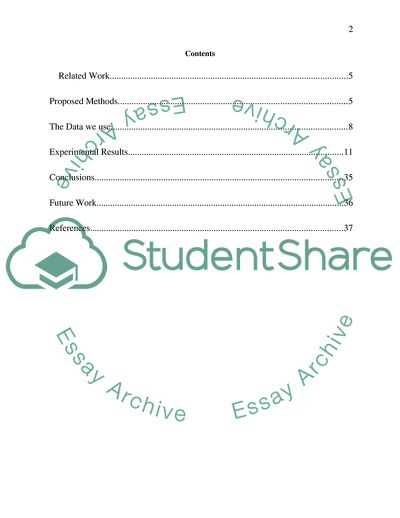Cite this document
(Data Mining as a Methodology for Extracting Hidden Knowledge from Breast Cancer Patients Records in Jordan Research Paper Example | Topics and Well Written Essays - 3000 words, n.d.)
Data Mining as a Methodology for Extracting Hidden Knowledge from Breast Cancer Patients Records in Jordan Research Paper Example | Topics and Well Written Essays - 3000 words. https://studentshare.org/information-technology/1861130-data-mining-as-a-methodology-for-extracting-hidden-knowledge-from-breast-cancer-patients-records-in-jordan
Data Mining as a Methodology for Extracting Hidden Knowledge from Breast Cancer Patients Records in Jordan Research Paper Example | Topics and Well Written Essays - 3000 words. https://studentshare.org/information-technology/1861130-data-mining-as-a-methodology-for-extracting-hidden-knowledge-from-breast-cancer-patients-records-in-jordan
(Data Mining As a Methodology for Extracting Hidden Knowledge from Breast Cancer Patients Records in Jordan Research Paper Example | Topics and Well Written Essays - 3000 Words)
Data Mining As a Methodology for Extracting Hidden Knowledge from Breast Cancer Patients Records in Jordan Research Paper Example | Topics and Well Written Essays - 3000 Words. https://studentshare.org/information-technology/1861130-data-mining-as-a-methodology-for-extracting-hidden-knowledge-from-breast-cancer-patients-records-in-jordan.
Data Mining As a Methodology for Extracting Hidden Knowledge from Breast Cancer Patients Records in Jordan Research Paper Example | Topics and Well Written Essays - 3000 Words. https://studentshare.org/information-technology/1861130-data-mining-as-a-methodology-for-extracting-hidden-knowledge-from-breast-cancer-patients-records-in-jordan.
“Data Mining As a Methodology for Extracting Hidden Knowledge from Breast Cancer Patients Records in Jordan Research Paper Example | Topics and Well Written Essays - 3000 Words”. https://studentshare.org/information-technology/1861130-data-mining-as-a-methodology-for-extracting-hidden-knowledge-from-breast-cancer-patients-records-in-jordan.


